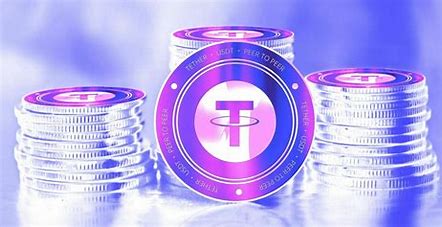In the world of cryptocurrencies, stablecoins have emerged as a crucial component. These digital assets aim to provide stability by pegging their value to a stable asset, usually a fiat currency like the US dollar. Among the various stablecoins in the market, Tether has gained significant popularity. However, it faces tough competition from other contenders vying for dominance in the stablecoin space. In this article, we will delve into the stablecoin wars, comparing Tether with its rivals and exploring the factors that contribute to their success. Apart from this read this guide on how Airdrops in Crypto Space Lead to Hurdle Valuation Swap.
Tether: The Pioneer
Tether (USDT) holds the distinction of being the pioneering stablecoin that achieved significant adoption within the cryptocurrency market. Its introduction in 2014 was met with swift recognition, thanks to its unique mechanism of maintaining a fixed exchange rate of 1:1 with the US dollar. The primary objective of Tether is to enhance liquidity on cryptocurrency exchanges and enable smoother trading experiences by mitigating the inherent price volatility commonly associated with other digital currencies.
The Contenders
USD Coin (USDC)
USDC, created by Circle and Coinbase, has emerged as a notable stablecoin in the past few years, drawing considerable interest. Thanks to its robust support from prominent players in the industry, USDC has garnered widespread popularity among individuals and businesses as a trusted and reliable digital currency option.
Dai (DAI)
Dai, developed by MakerDAO, stands out for its distinct stability mechanism, employing over-collateralization and a self-governing network of smart contracts. Dai aims to preserve its value by leveraging a blend of algorithms and user incentives. Its decentralized nature and adaptability to evolving market dynamics have garnered a dedicated community of supporters. Dai’s unique approach to stability sets it apart and contributes to its growing reputation in the cryptocurrency landscape.
Binance USD (BUSD)
Binance USD (BUSD) is the stablecoin launched by the renowned cryptocurrency exchange Binance. It operates on the Binance Chain and offers users fast and low-cost transactions. As one of the leading players in the crypto space, Binance has leveraged its platform’s popularity to promote the adoption of BUSD, making it a formidable contender in the stablecoin arena.
Factors Influencing Stablecoin Dominance
Trust and Transparency
Stablecoins that prioritize trust and transparency tend to garner more attention from users and investors. A robust and auditable reserve system, regular third-party audits, and clear communication of the stablecoin’s operations can enhance trust in the stability and reliability of the asset. Tether has faced criticism in the past regarding its transparency, and this provides an opportunity for other stablecoins to gain an edge by offering greater transparency.
Regulatory Compliance
Regulatory compliance plays a crucial role in the stability and acceptance of stablecoins. Adhering to legal and regulatory frameworks helps build confidence among users and opens doors for partnerships with financial institutions. Stablecoins that demonstrate a commitment to compliance can attract a wider user base and establish themselves as reliable and legitimate options in the market.
Decentralization and Governance
The degree of decentralization and the governance mechanisms of a stablecoin project can significantly impact its long-term success. Stablecoins that allow for community participation in decision-making processes and provide a transparent governance structure can foster trust and ensure the stability of the asset. Projects like Dai, with their decentralized governance models, have gained traction among users seeking a more inclusive and democratic approach.
Usability and Integration
The ease of use and integration with existing financial systems are crucial factors that determine the adoption of stablecoins. Stablecoins that offer user-friendly wallets, seamless integrations with popular exchanges, and a wide range of use cases have a competitive advantage. Projects like USDC and BUSD have focused on creating a seamless experience for users, enabling them to access stablecoins effortlessly.
Conclusion
The stablecoin wars are heating up, with Tether facing stiff competition from other contenders in the stablecoin space. Factors such as trust, transparency, regulatory compliance, decentralization, and usability play a pivotal role in determining the dominance of stablecoins. As the market continues to evolve, it will be intriguing to see how these stablecoin rivals shape the future of digital currencies.

